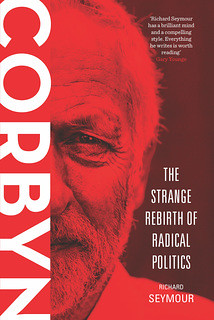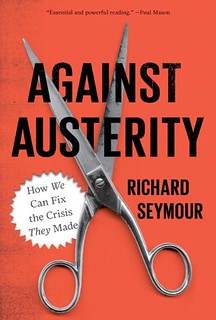Thursday, November 27, 2008
Mumbai posted by Richard Seymour

The shocking and depressing news from India would seem to defy any glib conclusions or slogans beyond the patently obvious - namely, that this grotesque hunting and killing of innocents is likely to succeed in (what appears to be) its principle aim of generating both a repressive response from the Indian state and a communal reaction. The facts so far reported do point to some general conclusions about the likely aims, and possible culprits. There has been a claim of responsibility from the 'Deccan Mujahideen', which could be related to the 'Indian Mujahideen' (IM), who in turn are alleged to be the latest incarnation of banned right-wing Islamist groups, the Students Islamic Movement of India (SIMI), and Lashkar-e-Toiba (LeT). The former originated in Uttar Pradesh in 1977, inspired by the Iranian revolution, championing a Deobandi strain of Muslim revivalism. The latter originated in Kashmir in 1990 and is, alongside the Jaish-e Mohammed, one of the larger Islamist groups operating in Pakistan. It has been associated with figures belonging to 'Al Qaeda'. This is presumably the basis for Indian intelligence claims that the violence of the IM is the result of ISI subventions across the subcontinent. Whatever the ratio of truth and falsehood in those claims, two other dimensions are probably far more important: one is the domestic aspect of communal violence, and the other is the global politics of the jihadis presumed to be involved. The choice of targets suggests that the emphasis must be on the latter. One analysis in the Telegraph explains that the symbolic significance of the attack on the Taj Mahal hotel is that it was built to give the Indian upper class somewhere decent to stay in an age of colonial racism and segregation. The hotel is now "a symbol of Western decadence", because of the rich tourists it attracts. Similarly, the train station attacked was a terminus busy with tourists. Unlike the attacks in 2006, which were designed to exact maximum casualties among Hindu civilians, this attack seems to have been designed to kill foreigners.
Let's suppose that the 'Deccan Mujahideen' is indeed a name chosen by members of the IM based in the Deccan plain of Maharashtra. According to the Indian government, the IM is a front for members of the banned SIMI and LeT groups. But these are very different organisations - if not doctrinally, then certainly in origin and manner of organising. SIMI was originally the student wing of the Jama'at-i-Islami Hind (JIH), who expelled it on the basis of its ultra-radicalism (the JIH today work alongside the Indian communist parties against the BJP and Congress Party). It was a tiny sect for years. But the accelerating trends in communal violence over the last two decades of the twentieth century saw it gain members beyond its areas of strength in Uttar Pradesh and Bihar, into some areas of the south. It has been banned several times, the first time shortly after 9/11 on the basis of claims of involvement in terrorist activities. Human rights advocates among others noted that Hinduta groups promoting racist violence, with close ties to the government, were not banned. They argued that the ban was a pretext for harrassing and terrorising Muslims in general, and indeed subsequent events bore this assessment out. The police slaughtered protesters supporting SIMI's legalisation in Lucknow shortly after the first ban was imposed. The subsequent massacre of 2,000 Muslims in the state of Gujarat, with the involvement of state officials including Narendra Modi, demonstrated that the Indian state was indeed on the war path against Muslims. The recent finding by the Justice Navati commission, exculpating Modi and pinning the blame for the violence on a 'Muslim mob' who are held responsible for the burning to death of 58 Hindu passengers on a train, rather suggests that the war is not over. Actually, a number of armed Hindutva groups were reportedly able to train and operate with impunity under the BJP.
At any rate, the bans on SIMI appear to have been based on insubstantial evidence of involvement in terrorism. In August this year, for example, a Delhi High Court tribunal lifted the ban, stating that evidence from the home ministry was inadequate to maintain it, although the Supreme Court threw this ruling out. The bans would certainly have seriously impacted on the organisation's size and ability to act, given that its members must retire from the organisation after thirty while new recruitment would have been impossible under conditions of illegality. This weakened organisation was held responsible by the Indian authorities for the Mumbai bombings in 2006 as well as attacks against Hindus in Malegaon the same year, both of which were communal attacks (subsequent attacks in Malegaon this year appear to have been carried out by Hindu nationalists seeking to re-create the fabled 'Aryan' state of old, the 'Hindu Rashtra' ideology of the BJP). It is possible that the SIMI, or elements of it, have engaged in some attacks. Eight years of repression, scapegoating, and some of the worst anti-Muslim violence for years, might have radicalised layers within it. However, the Indian state has too much of an interest in demonising all Islamist groups as a means toward repressing Muslims in general for its claims to be taken at face value.
LeT supposedly has connections with SIMI, but to the extent that these are reported they seem tenuous, and LeT is a very different kind of organisation. It was funded from the start by the Pakistani state to facilitate its control over the Kashmiri struggle for independence, which emerged through years of torture and murder by the Indian state (the Indian government's widespread practise of torture has led to the formation of a people's tribunal to combat it). This is part of the Pakistani state's general strategy of promoting various groups to create a pro-Pakistan consensus across central and southern Asia. Even under the conditions of the 'war on terror', the ISI has been able to redeploy these groups, including LeT, moving their camps to avoid detection by US bombers and so on. Unlike SIMI in India, LeT has some real social weight in Pakistan - after the US bombing of Afghanistan in 1998, it mobilised 50,000 youths at a religious gathering near Lahore at which attendees vowed to avenge the attacks. It also undoubtedly has a willingness and an ability to plan and execute highly sophisticated attacks. This doesn't mean any accusations against them are reliable, or that the ISI in any sense co-ordinated it. The Indian government is already more or less explicitly blaming Pakistan, which is one reason to be wary of such claims.
Whoever the 'Deccan Mujahideen' turn out to be, Jason Burke argues that the signs point to them being a home-grown movement. This means that any attempt to comprehend what is happening has to start with the Indian social structure, and particularly the position of Muslims in Indian society. So, let's stick with the obvious. Indian Muslims, comprising 13.5% of the population of India, are poor and disenfranchised: under-represented in most official organs, among the most exploited layers of society, and vulnerable to chauvanistic attack by Hindu nationalists. Their status as an insecure minority within a Hindu-majority state is one of the deadliest issues in Indian politics. The rise of atrocious Bharatiya Janata Party (BJP) throughout the 1990s reflected the growth of communal politics that was due to a number of factors. Demographically, Muslims were a faster growing group than any other, a fact that right-wing politicians sometimes ascribed to illegal migration by refugees from Bangladesh (many of these were actually Hindus). The rise of Islamist politics amid the disintegration of Congress hegemony (the Congress Party had failed to alleviate the extreme polarities of wealth or fulfil its pledges on poverty as outlined in Ghandi's Garibi Hatao programme was accompanied by the rise of other forms of politics rooted in caste or regional interests - so, for example, the Dalit party sought to build a coalition between Muslims and low caste blocs. Hindutva politicians and activists successfully exploited these changes to argue that the Muslim population was a surging menace, and that it would become a threat to the security of the Hindu population. The BJP's rapid ascent helped to accelerate the rise of communal violence. The party, which had at its core another organisation, the Rashtriya Swayamsevak Sangh, known for its fascistic tendencies, began its most illustrious phase with bouts of vicious sectarianism. One of these was the demolition of the Babar mosque in Ayodhya, in 1992. The demolition was not really an attack on a religious symbol so much as an attack on a symbol representing the integration and acceptance of Muslims. It was an attack on the very idea that Muslims were a part of Indian society, which the BJP explicitly rejected in their literature and speeches. And it duly prompted one of the worst riots in recent Indian history. Subsequently, it incited pogroms against Muslims in Bombay/Mumbai in 1993. (Just in passing, it was the far right BJP ally Shiv Sena, whose candidate threatened the extermination of the city's Muslims, which changed Bombay's name to its Marathi name, Mumbai, in 1995). The BJP are the most vicious exponents of communal politics, and it is no exaggeration to say that they came close to fascism at times, albeit the Indian ruling class wasn't ready for that level of repression and instability. It is now quite possible that they will sweep back to power, and the Gujarat massacre may be multiplied many times over.
All of this bodes extremely ominiously for the future of the world's largest democracy. Every filthy reactionary and pogromist will be strengthened, while the more violent jihadi groups will probably expand under a wave of state terror and communal violence. The only hope is in the Left organising a coalition to stop this horrible political logic in its tracks, and to my mind that entails defending Muslims from the inevitable resurgence of anti-Muslim hatred, while opposing the politics of the jihadis. The hypocritical policy of banning Islamist groups over allegations of terrorism while tolerating and even encouraging violent Hindutva groups has to be opposed. Those who try to mount pogroms have to be fought in the streets. Any escalation of the struggle with Pakistan also has to be opposed. Even if Manmohan Singh's government doesn't treat Pakistani intelligence as the ultimate culprit, there are other ways in which escalation can take place. Given that the largest concentration of India's Muslims is based in Jammu and the Indian-occupied area of Kashmir, any generalised repression by the Indian state will inevitably intensify the Kashmir conflict - and provoke further set-piece atrocities such as we have seen over the last day or so.










